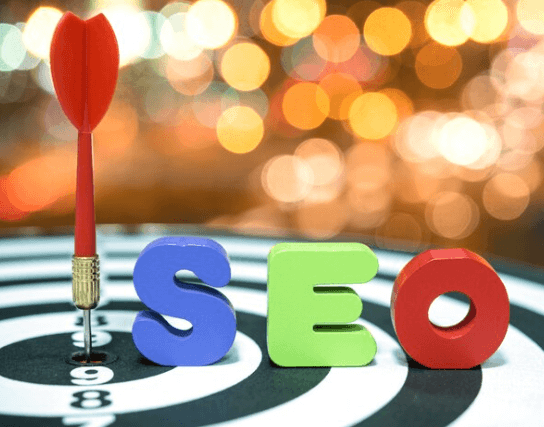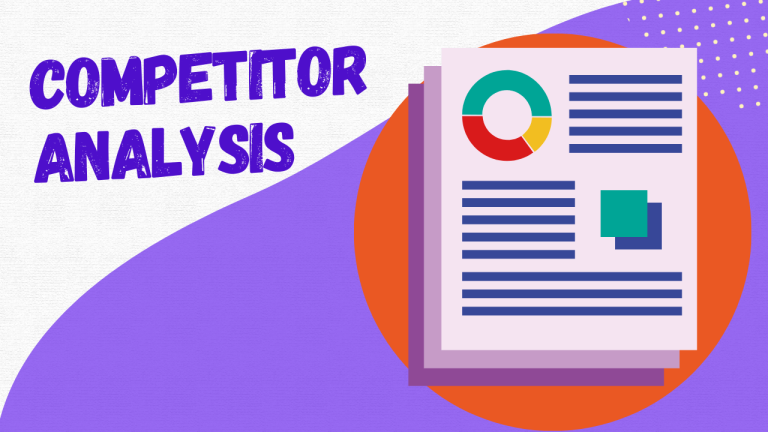Search Engine Optimization (SEO) is a combination of different strategies and ideas which are used to get high ranking in google search result pages and it also boosts our website visibility. It contains keyword research, crafting relevant content, on-page optimizations, link building for credibility, and technical performance like site speed and mobile-friendliness. Over time google also provides some methods about how rank online, sometimes this information is also called google updates.
About last year google gave a strategy of E-A-T which means ( Expertise, Authoritativeness and trustworthiness). Here is not any hard and fast rule to do SEO of your website with different SEO experts using different SEO techniques. But here are some SEO best practices which you should keep in mind and always follow them.
Table Of Content
On-page SEO Factors
1. Keywords Selection
Keyword selection is the first step in SEO services. SEO is totally dependent on some specific words and phrases that potential users are likely to enter into search engines to find their needs. So when we are doing SEO of our website we have some specific words which are related to our business and our audience use them to reach us. So we select some keywords about your business with low competition and high volume. Relevancy is an important factor in keyword selection we should keep in mind when selecting keywords about our business.
2. Content Writing
When we select our business potential keywords then the next step is content writing. We do engaging and creative content writing about our business and use optimal use of our business keywords. In content writing we should add all information about us and give answers to all the questions which are frequently asked by our customers. We should also use CTAs( Call To Action) in our content which inspire the user to take action and buy our services or products.
3. Title Tags (Headings)
Headings tags are very important in content writing, heading tags tell the story of your post to readers and search engines that your content is about what. Creating well-organised content with clear headings (such as H1, H2, H3, etc.) significantly improves readability and understanding. The H1 tag serves as the primary title, offering a concise overview of the page’s content. Subheadings (H2, H3, etc.) play a crucial role in structuring information hierarchically, contributing to an enhanced reading experience for users. Most important factor is that search engines use these tags to understand your content. By using relevant keywords into headings, you not just improve your SEO but also enhance your content clarity.
4. Meta description
When you are posting your content on your website Meta description is very important it tells a short story of your content that what you discuss in your post. So when you are creating your post description you need to add all about your post highlights and show out all about it, and you also need to use your keyword in your description which enhances your SEO.
5. URL Optimization
URL optimization is an important factor of SEO, influencing a website’s visibility and user experience. A well-structured and vivid URL gives a positive impact on users and also search engines. Optimal URLs are short, readable, and include relevant keywords. Avoiding unnecessary characters and parameters contributes to user-friendly links. Search engines appreciate clear, context-rich URLs, which can positively impact your site’s ranking. Additionally, a well-optimised URL makes it easier for users to understand the content they’re about to access, it also increases click-through rates.
6. Image Optimization
Image optimization is a crucial element in website performance and SEO. Using Compressed images without compromising quality reduces page load times, improving user experience and search engine rankings. Using descriptive file names and incorporating relevant alt text helps search engines understand the content of the image, contributing to better indexing. Additionally, choosing the appropriate file format (JPEG, PNG, Webp etc.) and dimensions ensures optimal display across various devices.
7. Links In Content
Also, using relevant links into your content is a best practice that makes it easy to understand both readers and search engines. Internal links guide users and search engines about relation between your website’s pages within your site, it also enhances engagement and gives a deep understanding of your content. External links to authority sources enhance the trustworthiness of your information and also provide another way to get more information from additional sources. In SEO perspective, well-structured links contribute to search engine understanding of your site’s structure and relationships between web pages.
Technical SEO Factors
1. Page Speed
The speed at which a page loads holds significant importance in technical SEO, as it directly influences both search engine rankings and user experience. A responsive website not only boosts visitor engagement but also holds a pivotal role in search engines efficient and user-friendly results. Factors such as leveraging browser caching, optimizing images, and minimizing server response times contribute to improved page speed. Google, considers loading speed when ranking websites, emphasizing the importance of swift and seamless user interactions. Improving page speed through actions like image compression and utilizing content delivery networks (CDNs) can elevate the overall browsing experience on websites. These optimizations have the potential to contribute to higher search engine rankings and enhance user satisfaction.
2. HTTPs
Hypertext Transfer Protocol Secure (HTTPS) stands out as a crucial element in technical SEO, playing a pivotal role in both website search engine rankings and security measures. It makes sure to secure an encrypted connection between a user’s browser and the website’s server, protecting sensitive data from critical cyber attacks. Search engines, including Google, consider HTTPS as a ranking factor, and give preference to secure websites in SRPs. Websites that implement HTTPS are not only safe for user data but also enjoy the SEO benefits of improved rankings and credibility in the eyes of both search engines and visitors.
3. Canonical Tags
Canonical tags are another essential component of technical SEO, employed to address duplicate content issues on websites. When multiple versions of a page exist, perhaps due to parameters or URL variations, canonical tags are used to indicate the preferred or “canonical” version. This tag helps search engines understand which version should be prioritized for indexing and ranking, consolidating the SEO authority of the content onto a single, chosen URL. With the use of canonical tags effectively, website owners can avoid issues arising from duplicate content, such as diluted SEO efforts and confusing search engines about the primary source of information.
4. Bread Crumbs
Breadcrumbs are a navigation in website design and an important factor of technical SEO. Its hierarchical trail of links and almost displayed near the top of a page, breadcrumbs show the path to users that he follows to reach the current page. In the perspective of SEO, breadcrumbs increase the understanding of site structure, and provide a vivid relationship between pages to the search engines. This is also helpful in better indexing and improves the website’s visibility in search result pages. In Addition, breadcrumbs reduce bounce rates, and help visitors to explore the website more effectively.
5. Indexing
Indexing is a process in which search engines crawl websites and analyze web pages to include them in their databases to use their data in SRPs ( Search Result Pages). In this process, the search engines assess the content, keywords, and other relevant information on a webpage. Once a page is indexed, it becomes eligible to appear in search engine results when users input relevant queries. Effective indexing is vital to ensure that your website’s content is easily discoverable by search engines, thereby influencing its visibility in search results.
Optimization for indexing holds significance, involving the creation of a clear site structure, utilization of descriptive meta-tags, and the provision of high-quality, relevant content. Regular updates and submission of sitemap are helping factors to the search engines to crawl and index your website.
6. Mobile Friendly
Nowadays most of the audience comes from mobile devices. So ensuring that your website is mobile-friendly and providing a google experience to mobile users. As the use of mobile devices continues to rise, search engines prioritize mobile-friendly websites in their rankings. These sites feature a responsive design that adapts seamlessly to different screen sizes, ensuring a consistent and enhanced user experience across various devices. Optimizing websites for mobile not only aligns with search engine criteria but also results in increased traffic and improved lead generation.
7. Sitemap
A sitemap serves as a comprehensive list outlining the structural framework of a website, functioning as a guide for search engines to efficiently navigate and index its content. Essentially, it provides an overview of your website, elucidating the hierarchy of pages and their interconnections. Adding sitemaps to search engines, such as Google, aids in comprehending a website’s structure, ensuring thorough crawling and indexing of all pertinent pages. This practice contributes to enhanced content visibility in search engine results. There are two primary types of sitemaps: HTML sitemaps designed for user navigation convenience and XML sitemaps specifically tailored for search engines. Both types play a crucial role in the SEO and overall performance of websites.
Off-page SEO Elements
1. Backlinking
Backlinking, or simply “backlinks,” stands as a vital component in search engine optimization (SEO), revolving around obtaining links from external websites to your own. These inbound links act as a vote of confidence and authority, signals to search engines that your content holds value and reliability. The presence of quality backlinks plays a pivotal role in enhancing a website’s search engine rankings. Search engines, such as Google, perceive backlinks as indicators of credibility and relevance, incorporating them into their algorithms when determining a site’s position in search results.
Emphasizing the quality of backlinks over quantity is crucial; links from reputable and authoritative sources carry more significance. Building a robust backlink profile involves crafting high-quality content that naturally attracts links, engaging in outreach efforts, and fostering relationships within your industry to secure valuable link placements.
2. Social Media
Social media plays a versatile role in influencing search engine optimization (SEO) by contributing to a website’s visibility, authority, and user engagement. While social media signals, like likes, shares, and comments, aren’t direct ranking factors, a robust social media presence can indirectly enhance SEO efforts. Social media platforms ( facebook, instagram, youtube) offer additional avenues for sharing and promoting content, potentially leading to increased visibility and opportunities for organic link-building.
Moreover, active engagement on social media boosts brand awareness, creating a positive cycle where users are more likely to recognize and trust your brand, potentially resulting in higher click-through rates from search engine results. Additionally, social media profiles frequently appear in search engine results, expanding the overall online presence. Integrating social media strategies with SEO efforts can significantly amplify the overall visibility and authority of a brand or website.







